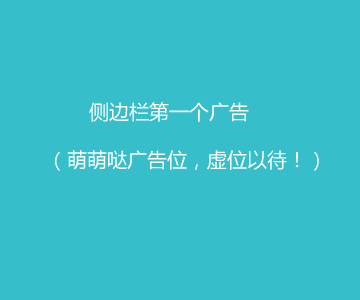【转】Uiautomator Api浅析
uiautomator api:
从android sdk api 16开始,Android SDK开始支持两个做功能UI测试的新工具。
uiautomatorviewer,一个用以扫描以及分析Android应用程序的UI部件的工具。
以及uiautomator ,一个提供API用以自定义UI测试的Java库。
要应用上面两个工具,除了需要android sdk api 16以上的前提条件外,还要求Android SDK Tools为21版以上。
UiAutomator主要涉及一下几个类,大多数位于源码包的com.android.uiautomator.core下,其中粗体字部分为主要会接触到的类,熟知这5个类的作用,就可以大体顺畅的写出UiAutomator的测试用例。
UiAutomatorTestCase
UiDevice
UiSelector
UiScrollable
UiObject
UiCollection
UiTestAutomationBridge, UiAutomatorBridge
InteractionController, QueryController
UiWatcher
UiAutomatorTestCase
TestCase (Junit) -> UiAutomatorTestCase -> App Test
每个测试用例都需要继承UiAutomatorTestCase,以实现测试环境的setup,teardown等同能。而UiAutomatorTestCase则是通过继承Junit3中的TestCase类,并在其中的setUp() 、tearDown() 、getParams() 函数中。其中主要是用Bundle实现Android Activity之间的通讯。在UiAutomatorTestCase,,还加入了getUiDevice()等关于UiDevice的 函数,以实现在测试的任意地方均可调用UiDevice()。
UiDevice
此类主要包含了获取设备状态信息,和模拟用户至于设备的操作两类api。
可以通过getDisplaySizeDp(), getDisplayWidth() , getDisplayHeight() ,getProductName() ,getCurrentActivityName(), getCurrentPackageName() 等获取设备相关信息。
pressMenu(), pressBack(), pressHome(), pressSearch() ,pressDPadCenter(), pressDPadRight(), pressDPadLeft(), pressDPadUp(), pressDPadDown() ,pressDelete(), pressEnter(), pressKeyCode(), pressRecentApps(),click(),swipe(),getDisplayRotation() setOrientationLeft()… wakeUp(), sleep() ,dumpWindowHierarchy(), waitForWindowUpdate()等API可以灵活的操纵设备。
而takeScreenshot() 允许随时对设备截屏。
UiSelector
主要是通过一定查询方式,定位到所要操作的UI元素。
一般UI元素均可通过以下API定位:text(), textMatches(String regex), textStartsWith(), textContains() ,className() ,classNameMatches(String regex), className(Class type) ,Description(), descriptionMatches(String regex),descriptionStartsWith(),descriptionContains() ,packageName(), packageNameMatches(String regex)。
值得注意的是index()和 instance() 两个函数,其中index()是当前页面的ID编号,instance()则表示在一定都搜索结果下,获取的子元素集的第几个元素。如:
new UiSelector().className("android.widget.ImageView").enabled(true).instance(2);
另有enabled(), focused(), focusable(), scrollable(), selected(), checked(), clickable() ,longClickable() ,childSelector()等检索条件,顾名思义。
UiObject
UiObject可代表页面的任意元素,它的各种属性定位通常通过UiSelector来完成。
比较常用的Api如clickAndWaitForNewWindow(),表示点击该元素,并且等待新新窗口的展示完毕。这一过程是Android UI Testing框架支持的,不需要额外的控制等待时间。
UiObject允许点击该元素的具体一个部分,Api如clickTopLeft(), longClickBottomRight(),…
通过getText(), getContentDescription(), getVisibleBounds(),… 等api可获取UiObject的相关属性,getPackageName() 可用来明确是否打开了目标测试的App.
setText(), clearTextField() 可以 用来设置以及清空所关联的输入框。
waitForExists() 可以用来操纵相关等待或验证。
UiCollection
UiCollection一般与UiSelector连用,如它的构造函数也要求提供Uiselector: UiCollection(UiSelector selector)。
它的api较少,主要用以从Uiselector筛选出的元素集中挑出所要的元素:getChildByDescription(), getChildByInstance(), getChildByText() ,以及统计元素集的个数getChildCount()
UiScrollable
UiObject -> UiCollection ->UiScrollable
UiScrollable 用来表示可以滑动的界面元素,其继承关系如上图所示。
其Api中,setAsVerticalList(), setAsHorizontalList() 用以设置Ui元素列表是基于横向滚动还是纵向滚动。其后可以用getMaxSearchSwipes() ,flingForward(), flingBackward() ,scrollForward(),scrollBackward() ,scrollToEnd(), scrollToBeginning() 等函数控制滑动,以及getChildByDescription(), getChildByInstance(), getChildByText() ,scrollIntoView(), scrollTextIntoView(),… 来选择是否已经转换到具有目标元素的页面。如:
UiScrollable appViews = new UiScrollable(new UiSelector().scrollable(true));
appViews.setAsHorizontalList();
UiObject helperApp;
helperApp = appViews.getChildByText(new UiSelector()
.className(android.widget.TextView.class.getName()), " 91助手 "); 则若当前页面没有91助手APP, 测试会自动滑动页面,直到91助手App出现。
下面介绍下UI Testing Framework构成的重要类:
UiTestAutomationBridge
温馨提示: 本文由Jm博客推荐,转载请保留链接: https://www.jmwww.net/file/70314.html


